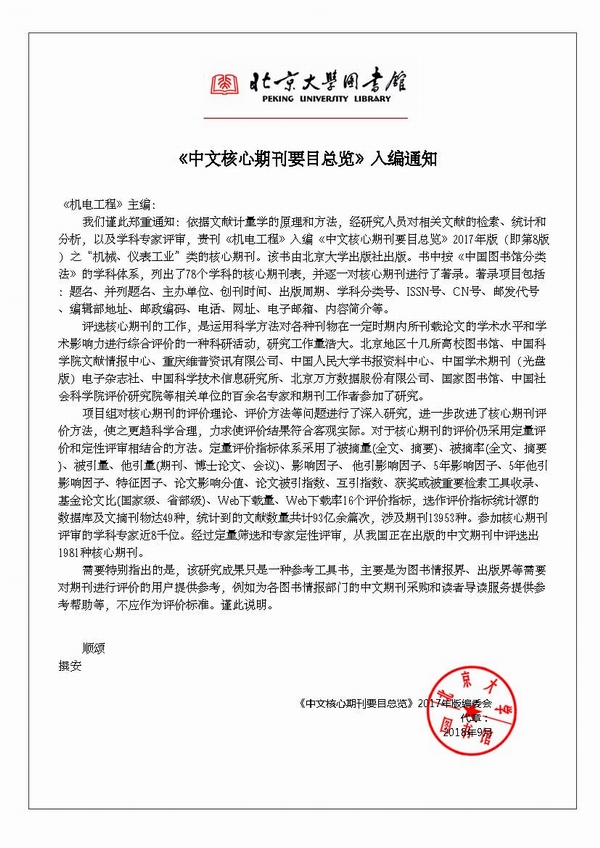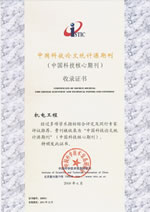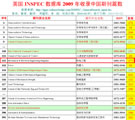
Founded in 1971 >
Chinese Sci-tech Core Periodicals >
British Science Abstracts (SA, INSPEC) Indexed Journals >
United States, Cambridge Scientific Abstract: Technology (CSA: T) Indexed Journals >
United States, Ulrich's Periodicals Directory(UPD)Indexed Journals >
United States, Cambridge Scientific Abstract: Natural Science (CSA: NS) Indexed Journals >
Poland ,Index of Copernicus(IC) Indexed Journals >
International Standard Serial Number:
ISSN 1001-4551
Sponsor:
Zhejiang University;
Zhejiang Machinery and Electrical Group
Edited by:
Editorial of Journal of Mechanical & Electrical Engineering
Chief Editor:
ZHAO Qun
Vice Chief Editor:
TANG ren-zhong,
LUO Xiang-yang
Tel:
86-571-87041360,87239525
Fax:
86-571-87239571
Add:
No.9 Gaoguannong,Daxue Road,Hangzhou,China
P.C:
310009
E-mail:
meem_contribute@163.com
WANG Lin1,2, LI Yanbiao1,2, SUN Peng1,2, LUO Yiqin1,2, XU Mengru1,2, ZHENG Hang1,2
(1.School of Mechanical Engineering, Zhejiang University of Technology, Hangzhou 310032, China;2.Key Laboratory of Special Purpose Equipment and Advanced Processing Technology of Ministry of Education, Zhejiang University of Technology, Hangzhou 310032, China)
Abstract: Aiming at the optimized dynamic load distribution of parallel mechanism, the kinematics, dynamics and mechanism performance of a human shoulder joint mechanism were studied and an optimization method of dynamic load distribution was proposed. Firstly, the dynamic model was established based on the Lagrange equation and the virtual work principle, and the dynamics simulation software was utilized to verify the correctness of the dynamic model. Then, based on the dynamic model, the dynamic performance index and force mapping performance index of shoulder joint mechanism were established, and the weighted sum method was applied to transform them into a comprehensive performance index. Finally, Dijkstra algorithm was used to get the best performance trajectory,and genetic algorithm was used to optimize the generalized time of the mechanism by considering the time, energy consumption and torque fluctuations, so as to obtain the torque, angular displacement and angular velocity of each joint. The results show that the optimization method can make shoulder joint mechanism to achieve the movement under the condition of the shortest time, minimum energy consumption and the best performance. This optimization method is also suitable for other parallel mechanism.
Key words: humanoid shoulder joint; dynamic model; optimal performance; generalized time; dynamic load distribution







